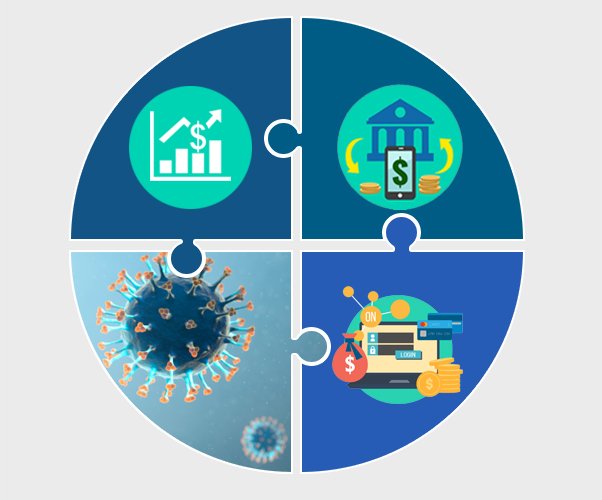covid-19 and business planning: how banks should respond

The impactful effect of Covid-19 on world economies and the financial sector had thrown market forecasts into the abyss. Weakened investments, and depositors are adversely affecting the capabilities and capital position of the global payments industry.
In order to successfully navigate through this natural outbreak, banking leaders need to dedicate their efforts towards transparent communication with their customers and stakeholders. Moreover, a new business continuity plan that should be put into action to reshape operational visibility, communication methods, and follow a bottom-up approach towards digital transformation.
The first step in making sense of this business continuity plan and to adhere to the disruption of the Covid-19, is to identify key priorities that banking leaders should act upon.
1. Steering the masses towards cashless transactions
While the bank adheres to current health authorities’ policies and closes their doors to public operations, customers are being forced into a cashless reality. This in term allows the bank to enforce public education towards spending via banking cards and pushes communities to rely on minimal cash withdrawals from ATM machines. The banking sector should focus their short-term communication strategy on short, informative messages that ease and educate the community on digital spending.
2. Ensure optimal operational capacity & discuss alternative methods to keep customer trust.
Banks are experiencing operational disruption, as well as witnessing an altered customer behavior.
To meet customer demand, banks can follow short-term tactics that would ensure operational visibility while adhering to safety measures. Such as delivering payment cards to customers’ front door, donating substantial amounts to local hospitals, or offering credit facilities for small businesses to survive. Banks’ preparedness to handle public scrutiny is risky, yet with the right effective measures the impact can go a long way in the public eye.
With product and service delivery at stake, alternative supply chain strategies are being assessed to ensure the delivery of products. In the case of payment card production, banks are resolving to instant issuance centers, alternative card manufacturers, or card solution providers; on-spot demands, low batch printing and loose contractual agreements, are all indicators of agility that banks across the global payments industry are looking for.
3. Advocate the use of digital platforms for workers & customers alike
Covid-19 is driving banks to realize their digital transformation potential. Bank leaders are putting efforts in understanding cyber operations for remote-workers, and are identifying use case opportunities of their digital channels for customers and employees alike.
With more time spent on mobile screens, banks should use their digital platforms to communicate a comprehensive guide on using mobile banking services to customers to meet their daily needs of checking balance, credit facilities, bill payments, and other general account activities. On the other hand, employees can act virtually to customer demands, with advice on products and services, financial advice, and re-engage with customers in a timely manner.
All of the above should been made accessible using mobile banking apps, online services, smart branches, interactive teller machines and online credit facilitators.